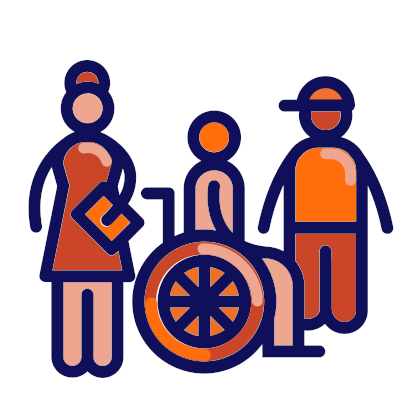Dealing with propaganda, misinformation and fake news

It is vital for schools to provide students with a solid education on media and information literacy as part of the curriculum.
Teachers must be well-trained in the subject to empower students with the necessary competences to critically understand and assess information reported by all forms of media.
Projects in partnership with national and local authorities and media organisations are encouraged.
Facts & figures
Two thirds of EU citizens report coming across fake news at least once a week.[1]
Over 80% of EU citizens say they see fake news both as an issue for their country and for democracy in general.[2]
Half of EU citizens aged 15-30 say they need critical thinking and information skills to help them combat fake news and extremism in society.[3]
What is propaganda, misinformation and fake news?
The terms ‘propaganda’, ‘misinformation’ and ‘fake news’ often overlap in meaning. They are used to refer to a range of ways in which sharing information causes harm, intentionally or unintentionally – usually in relation to the promotion of a particular moral or political cause or point of view.
It is possible to separate out three clearly different uses of information which fall into this category:
- Mis-information - false information shared with no intention of causing harm
- Dis-information - false information shared intentionally to cause harm
- Mal-information - true information shared intentionally to cause harm.[4]
Although none of these phenomena are new, they have taken on new significance recently with the widespread availability of sophisticated forms of information and communication technology. The sharing of text, images, videos, or links online, for example, allows information to go viral within hours.
Why is propaganda, misinformation and fake news important at school?
Since information and communication technology is so central to their lives nowadays, young people are particularly vulnerable to propaganda, misinformation and fake news. Young people spend a significant amount of their time watching television, playing online games, chatting, blogging, listening to music, posting photos of themselves and searching for other people with whom to communicate online. They rely heavily on information circulated online for their knowledge of the world and how they perceive reality. Many parents do not have sufficient technical competence to keep up with their children’s online activity, or educate them about the risks they might be facing. Schools, therefore, have a duty to provide young people with the critical and information skills which they cannot access at home.
“The significant rise of fake news as propaganda in recent years makes it critical that students have the skills they need to identify truth and discern bias.”[5]
The ability to respond critically to online propaganda, misinformation and fake news is more than a safe-guarding tool, however, it is also an important democratic competence in its own right. Analytical and critical thinking, and knowledge and critical understanding of the world, including the role of language and communication lie at the heart of the Council of Europe Reference Framework of Competences for Democratic Culture. They are central to Digital Citizenship Education and Media and Information Literacy.[6]
“School is the one place where it is absolutely crucial to train future citizens to understand, to criticise and to create information. It is in schools that the digital citizen must begin and maintain constant critical thinking in order to attain meaningful participation in his or her community.”[7]
The ability to handle off-line as well as online propaganda, misinformation and fake news is also a key skill in a number of other school subjects, e.g., History, Social Studies, Science, Religious Studies and Art. Young people may study the use of nationalistic and patriotic slogans, or so-called ‘atrocity propaganda’ in WW1 in History, for example; or art forms designed to support particular ideologies in Art lessons.
Another area in which information and communication technology is becoming an issue for schools is through adverse comments made about teachers and schools on social media. Schools are finding that parents and others increasingly turn to social media when they have a dispute or disagreement with their school, e.g., over school rules, school policies, or staff behaviour. How to handle online critical or defamatory comments or campaigns of this sort has become a matter of concern for leaders and managers in some schools.[8]
What are the challenges?
There are a number of challenges facing schools wishing to take propaganda, misinformation and fake news seriously as an educational or social issue:
- Teachers’ own online activity and area of experience is often quite limited and frequently lags behind that of their students. This can make them reticent to take on this area of teaching and learning without a significant commitment to professional development.
- The speed with which technology and young peoples’ online activity changes makes it difficult for teachers to keep up-to-date with recent developments. Even professional development programmes can go rapidly out-of-date.
- It can be difficult finding a discrete slot in the school timetable where issues relating to the creation and sharing of information can be taught. While aspects may be raised in a number of subjects, it can be a problem finding a space in an over-full curriculum where the phenomenon can be dealt with head-on as an issue in its own right.
- The description ‘fake news’ does not mean there is such a category as ‘true’ news. All news is a selection and written to suit a particular audience for a particular purpose. Providing the depth of analysis and sophisticated skills that do justice to this topic can be a challenge for some schools, especially in terms of teacher competence and training.
“States should take measures to promote media and digital literacy, including by covering these topics as part of the regular school curriculum and by engaging with civil society and other stakeholders to raise awareness about these issues.”[9]
How can schools get active?
Providing training for teachers on media and information literacy is the key to raising the profile of the issue in schools. Even though it may have a tendency to date, training can at least alert teaching staff to the importance of this area of learning for their students. The more important teachers see the area, the more they will feel the need to continuously up-date their skills themselves.
While it is important to recruit as many teachers as possible to this work, it can be more effective in the long run to start by appointing an individual teacher, or a small team, to lead on media and information literacy in the school. This element of specialist expertise can be charged with:
- Keeping staff up to date with new developments in information and communication technology
- Training them in strategies for handling propaganda, misinformation and fake news
- Helping them integrate these issues into the curriculum of different subjects
- Leading on school-policy development and action planning in this area.
In addition to these sorts of developments, there are a number of other initiatives a school can take to meet the challenges of the rapidly changing world of online propaganda, misinformation and fake news. These include:
- Special days or events in school on the subject of propaganda, misinformation or fake news as a way of overcoming the problems of an over-crowded formal curriculum
- Peer education initiatives in which older students instruct and counsel younger students in the safe handling of information they access in the media
- Partnerships with outside professionals or companies with expertise in this area, e.g., journalists, IT companies, universities
- Virtual links with schools in other regions or countries enabling students to get a different perspective on news and current affairs
- Recruiting parents with expertise in information and communication technology to help with school policy development or work alongside teaching staff to enrich student learning.
[1] Flash Eurobarometer 464 , 2018
[3] Flash Eurobarometer 455, 2018
[4] Wardle & Derakhshan, H., 2017. Information Disorder: Toward an interdisciplinary framework for research and policy making. Strasbourg, France: Council of Europe.
[5] When is fake news propaganda?, Facing History and Ourselves, 2018
[6] Digital Citizenship Education Handbook, 2019
[8] Council of Europe: Managing Controversy: a whole school training tool, 2017
[9] OSCE: Joint declaration on freedom of expression and “fake news”, disinformation and propaganda
 Resources on Dealing with Propaganda, misinformation and fake news
Resources on Dealing with Propaganda, misinformation and fake news
 Related schools projects
Related schools projects
Address: Rua Caíque Bom Sucesso, 8700-221 Olhão
Country: Portugal
Project: “Ria Azul School Newspaper”: A Newsroom Project in a Lower Secondary School
 Working language during the project:
Working language during the project:
- Portuguese
 Themes of the Council of Europe campaign “FREE to SPEAK, SAFE to LEARN - Democratic Schools for All” covered:
Themes of the Council of Europe campaign “FREE to SPEAK, SAFE to LEARN - Democratic Schools for All” covered:
- Making children’s and students’ voices heard
- Addressing controversial issues
- Dealing with propaganda, misinformation and fake news
- Improving well-being at school
 Competences from the Reference Framework of Competences for Democratic Culture (CDC) addressed and where / how they were integrated:
Competences from the Reference Framework of Competences for Democratic Culture (CDC) addressed and where / how they were integrated:
- Knowledge and critical understanding of the world: politics, law, human rights, culture, cultures, religions, history, media, economies, environment, sustainability
The newsroom develops multiple literacy dimensions such as citizenship, environmental protection, ocean and media literacy ; analytical and critical thinking skills towards media and the environment. - Knowledge and critical understanding of language and communication
The newsroom provides students with solid information literacy and the necessary competences to critically understand and assess information - Co-operation skills
The newsroom provides students with the competences and responsibilities for democratic culture in a safe learning co-working environment that promotes freedom of expression, as well as inclusion, tolerance and human rights.
School community emerges in this interdisciplinary project, improving communication among students, teachers, parents, school management and the school community.
 Target group age range:
Target group age range:
- 11-15
 Level of education:
Level of education:
- Lower secondary education
Short description of the project:
“Ria Azul School Newspaper” is an educational school project that grew from the idea of transforming a class into a newsroom for the last two days of each school term. Twenty four students from the 7th grade work together as journalists in a newsroom in order to create content for the “Ria Azul School Newspaper” annual edition.
The theme of last year’s edition was “Protect the seahorse” because the seahorse population of Ria Formosa, once one of the healthiest in the world, has now decreased by more than 90%, due to poaching and illegal fishing for traditional medicine in eastern countries.
Our school, João da Rosa School, is located in Olhão, a small fishing town in the heart of the Ria Formosa, a very well known lagoon system in the Algarve. Our school was recognised by the Ministry of Education in 2018 as “Escola Azul” (a “blue school”) because of our special relationship with the sea and our promise of improving ocean literacy in students. At the same time the journal improves students’ media literacy.
“Ria Azul School Newspaper” is a local and environmental newspaper. Different class teachers’ help in the supervision of students’ work over the two days of newsroom, but all through the school year, several other activities take place in order to produce content for the newspaper.
First the students have to create the name and the logo of the newspaper, then they plan the activities with the teachers and organise their work in sections or teams: Audiovisual production; We are blue school; Ria sports; Sea interviews; Beautiful ideas; Blue news. They also have to visit and have regular communication with professional journalists, and they begin the project by paying a visit to a real newsroom at the local newspaper “Sul Informação”.
In this year’s edition students conducted an interview with the Olympic Sailing athlete, Joana Pratas and local street art artist SEN. Students covered the important work of Oceanário and CCMAR, investigation centers that are studying Ria Formosa seahorse reproduction in captivity. Students visited sustainable firms such as NECTON. They also reported on school environmental engagement issues such as the Coastwatch Project and the law-project made by our students that was presented in the national parliament in order to implement better laws to protect the ocean.
Finally, municipal councils and parents’ associations are responsible for the final printing of the journal.
The class transformation into a newsroom enables the students to discuss sensitive and controversial issues, promoting their engagement with environmental community problems. It also provides students with a solid education on media and information literacy, empowering them with responsibility, collaborative work and the necessary competences to critically understand and assess information. They have to deal with deadlines, information sources, create, edit and publish content and talk with several types of professionals in order to make their journalism work.
A redesigned curriculum that provides flexibility to inspire the personalisation of learning and addresses the diverse needs and interests of students is part of the current education law in Portugal.
 Aims/objectives
Aims/objectives
- Develop multiple literacy dimensions such as citizenship, environmental protection, ocean and media literacy.
- Develop analytical and critical thinking skills towards media, environment and school community through an interdisciplinary project.
- Improve communication among students, teachers, parents, school management and the school community.
 Expected results/outcomes
Expected results/outcomes
- The newsroom project provides the values, attitudes, skills, knowledge and critical understanding that every student as a citizen needs in order to be active in a democratic society.
 Changes
Changes
- To create a thoughtful, creative, flexible, self-motivated student, able to learn and to think critically and to contribute to the community and society generally.
- To create partnerships between students, teachers and parents.
- To create interdisciplinary, cooperative and inclusive projects.
- To attract professional journalists and scientists as stakeholders.
- To make students take the initiative more frequently and become more aware of their own capabilities and responsibility towards community, environment and media.
 Challenges you faced
Challenges you faced
- Students would benefit from more time working in a newsroom.
- Students would benefit from having better material such as cameras or computers to work with design programmes.
- Teachers would benefit from more information about media and environmental issues.
 Time-frame of the project:
Time-frame of the project:
- 2018-2021
 Council of Europe materials on citizenship and human rights education used while preparing or implementing your practice:
Council of Europe materials on citizenship and human rights education used while preparing or implementing your practice:
- Reference Framework of Competences for Democratic Culture







